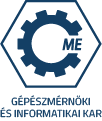| Course objectives: |
| |
| Course content and structure: |
| Failure mechanisms of structural components having crack like defects: brittle fracture, ductile fracture, fatigue, stress corrosion cracking, creep fracture. Fracture modes, typical fracture mechanics parameters. Fracture mechanics testing of metals: static (KIc, JIc, J-R curve determination, KIIc, KIIIc); dynamic (KId, dynamic J-R curve determination); fatigue crack propagation testing (uniaxial and multiaxial loading); creep crack propagation testing; crack arrest testing (KIa, Pellini, Robertson test). Testing techniques. Comparision of fracture mechanics characteristics of structural materials in thee case of different loading conditions. Relationships between the fracture mechanics material properties. Reference curves. Static and dynamic fracture mechanics testing of polymers and ceramics, their fracture mechanics charateristics. Practical importance of fracture mechanics material properties, and their applications in the design of structural components, and in the structural integrity assessment. |
| Evaluation method: |
| Colloquium – written test and oral examination |
| Required reading: |
| 1. Blumenauer,H. - Pusch,G.: Műszaki törésmechanika. Műszaki Könyvkiadó, Budapest, 1987. 2. Lenkeyné Biró Gyöngyvér: Dinamikus törésmechanikai vizsgálatok, Miskolci Egyetem, 1999. 3. Lenkeyné Biró Gyöngyvér - Thomas Varga: A repedésmegállás és vizsgálata Miskolci Egyetem, 1999. 4. G. Pluvinage - L. Tóth: Lineáris törésmechanika, Miskolci Egyetem, 1999. |
| Suggested reading: |
| ASM Handbook, Vol. 19:Fatigue and Fracture, ASM International, 1996. |


